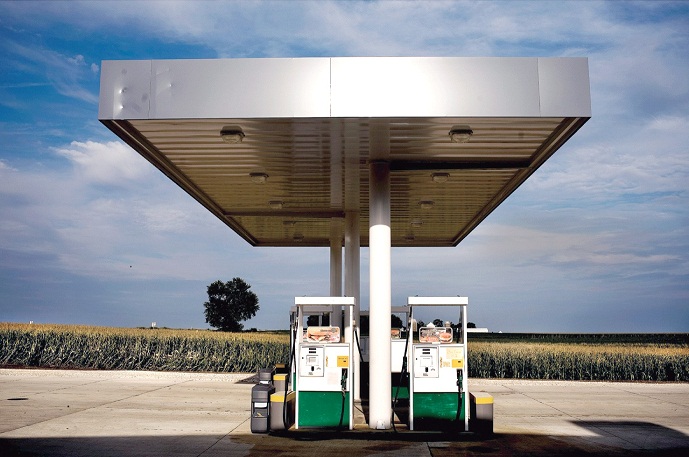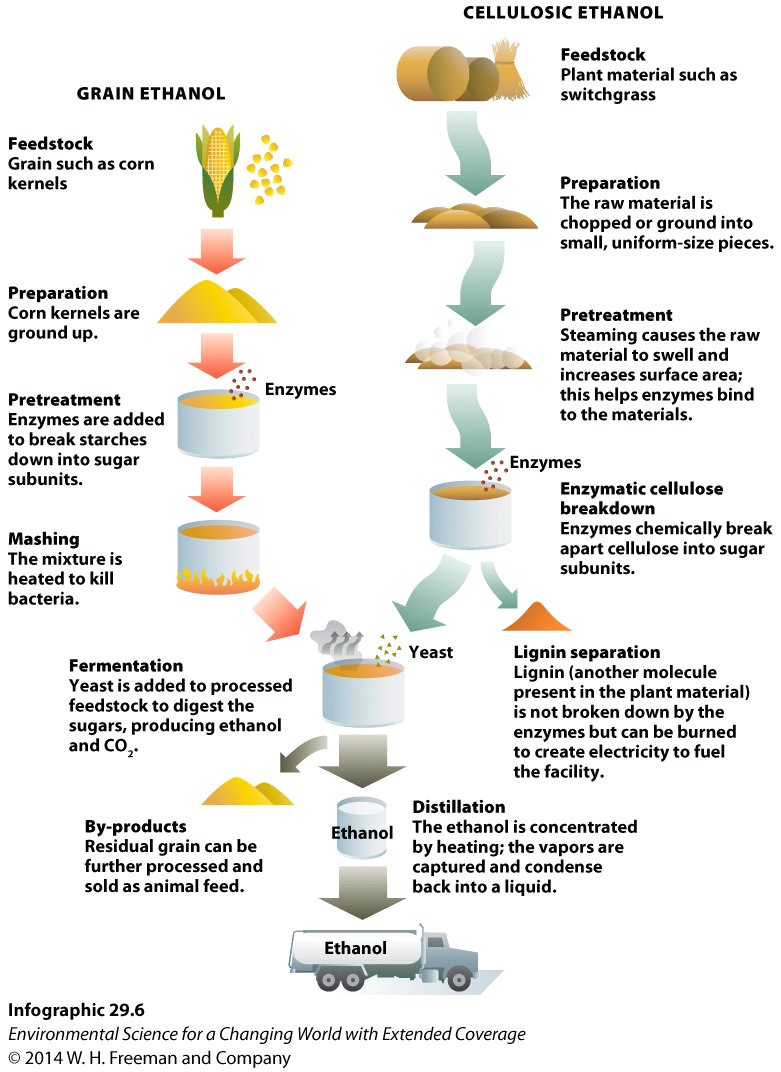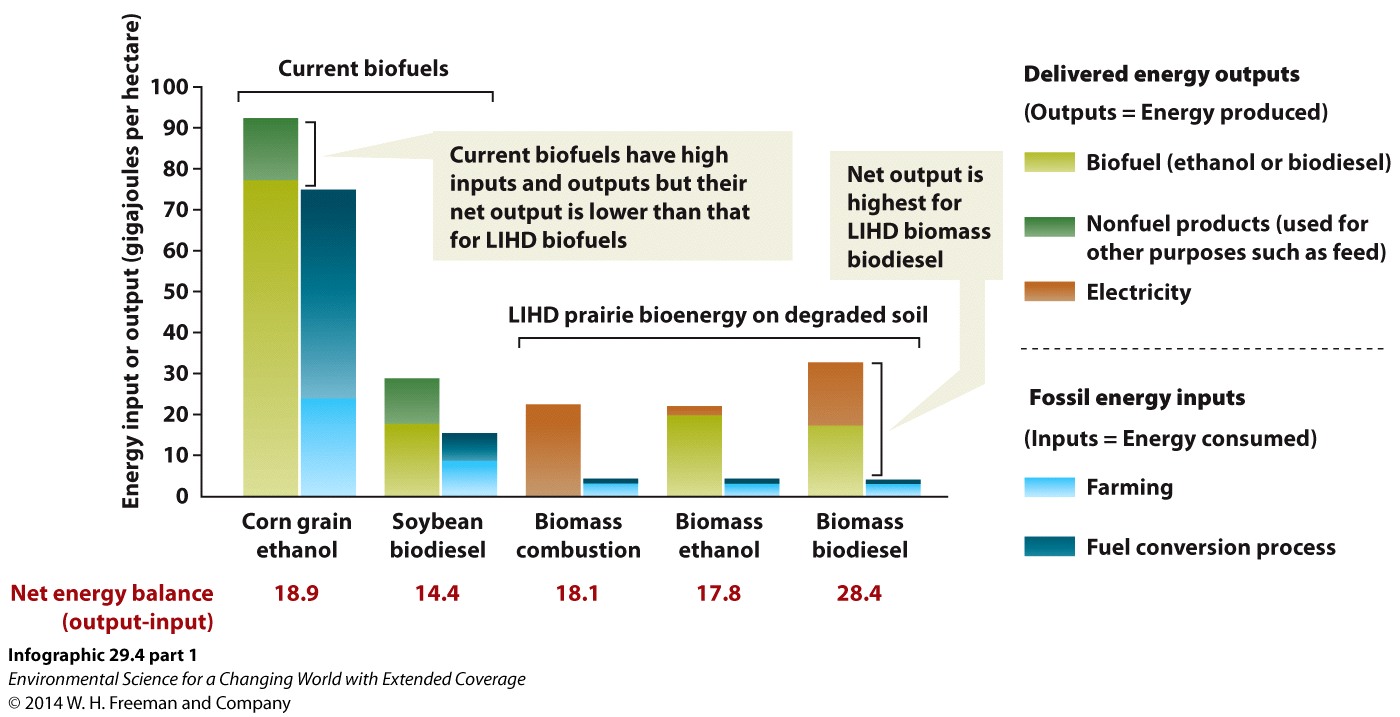
Chapter 29. Chapter 29: Biofuels
What are biofuels and what are potential biofuel sources?

Guiding Question 29.4
What are biofuels, and what are potential biofuel sources?
Why You Should Care
Biofuels are "hot" these days because they are currently offering the most promise as a replacement for petroleum-based fuels. A biofuel is, not surprisingly, fuel produced from living organisms. Nearly all such fuel is either produced directly by autotrophs or by yeasts or bacteria fermenting the carbohydrates produced by autotrophs. These fuels can be hydrocarbons, oils, or alcohols, but all share the quality of being able to release a lot of energy when combusted. Many different sources of biofuels are being researched: Algae, grass, corn, and oil palms are just a few examples. One biofuel is already being used commercially: Biodiesel has been available for years as an alternative to petroleum-based diesel fuel. Biodiesel is produced by chemically altering vegetable oil (usually used frying oil reclaimed from restaurants and food manufacturing plants), and can be used interchangeably with diesel in vehicles, machinery, and household oil-furnaces. Although a renewable, carbon-neutral fuel source, biodiesel alone can’t meet the world’s fuel needs because there isn’t enough used vegetable oil. Since it is likely that other biofuels will soon join the market, it is important to be informed about their pros and cons.
Test Your Vocabulary
Choose the correct term to match each of the following definitions.
| Term | Definition |
|---|---|
| Farming method in which one variety of one crop is planted, typically in rows over large areas with large inputs of fertilizer, pesticides, and water. | |
| Bioethanol made by breaking down cellulose in plants; a difficult process that has yet to be scaled up to meet large production goals. | |
| The amount of carbon released during the first 50 years of land clearing for biofuel feedstocks. | |
| The storage of carbon in a form that does not readily release the carbon to the atmosphere or water. |
1.
When switchgrass is grown intermixed with a variety of prairie plants, more:
| A. |
| B. |
| C. |
| D. |
2.
A by-product of cellulosic ethanol production is:
| A. |
| B. |
| C. |
| D. |
3.
Plants remove carbon dioxide from the atmosphere through photosynthesis and convert it into many different energy and structural molecules. The process of keeping those molecules in the underground storage organs of perennial plants and carbon dioxide out of the atmosphere is called carbon:
| A. |
| B. |
| C. |
| D. |
4.
Which of the following is NOT a similarity between producing ethanol from starch and producing ethanol from cellulose?
| A. |
| B. |
| C. |
| D. |

5.
Match the numbers in the diagram above to the items listed below. Note that more than one number may correspond to a description.
Feedstock:
1: 2: 8: 9:
Enzymes are added:
3: 5: 10: 11:
By-product:
2: 6: 10: 12:
Heating to kill microbes:
4: 5: 7: 10:
Increases surface area for reaction:
2: 7: 9: 10:
Yeast is added to ferment sugars:
3: 5: 7: 11:
By-product typically used for making animal feed:
1: 6: 10: 12:
By-product typically used for producing electricity:
1: 6: 10: 12:
Ethanol separated from watery mixture:
3: 5: 7: 11:
Distillation:
3: 5: 7: 11:
6.
Thought Question: Compare and contrast numbers 3 and 11.

7.
Thought Question: Refer back to the first graph in Infographic 29.4 (above). The spent grain by-product from corn fermentation (number 6) is what that makes up most of the nonfuel products listed in the legend.
Part 1: Why do you think this grain is listed as energy produced if it is used for feed?
Part 2: When evaluating the EROEI of corn bioethanol, some experts include the energy available from the spent grain used for feed into the total energy outputs as shown in Infographic 25.4; some agencies subtract the energy associated with the feed from the energy inputs; others leave out the feed by-products altogether. How would the way spent-grain energy is accounted for affect calculations of EROEI for corn bioethanol? Remember that, although spent grain could be burned for energy, it usually isn't.
Part 2: Both of the first methods (including spent grain energy in total energy outputs or subtracting it from energy inputs) would tend to make the energy output from corn seem higher, and that would inflate the EROEI. Not including spent grain energy would tend to deflate EROEI.
Activity results are being submitted...